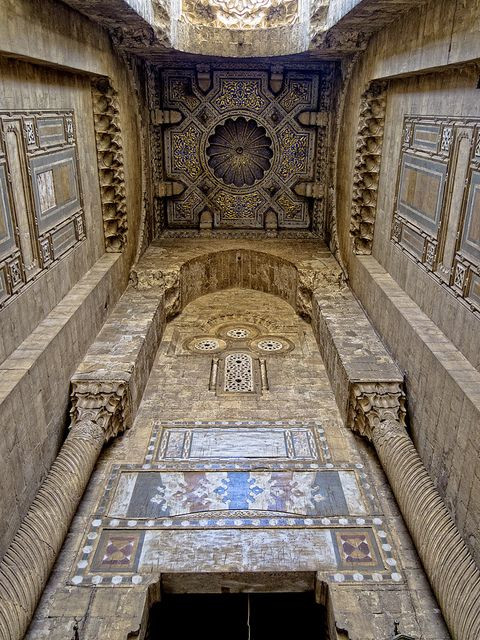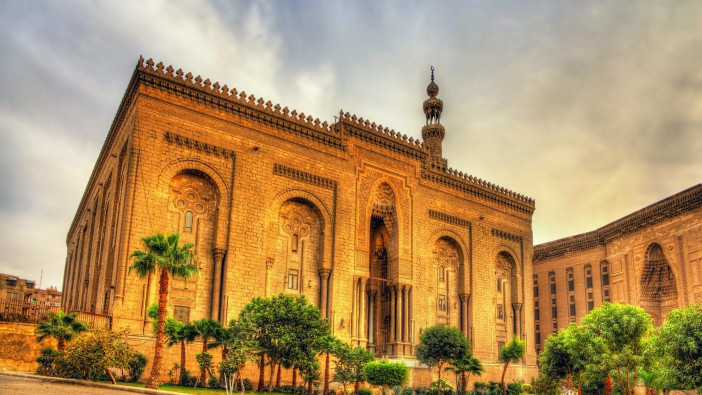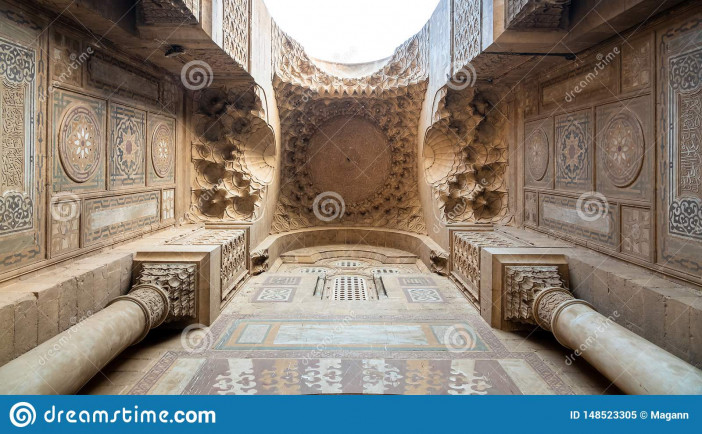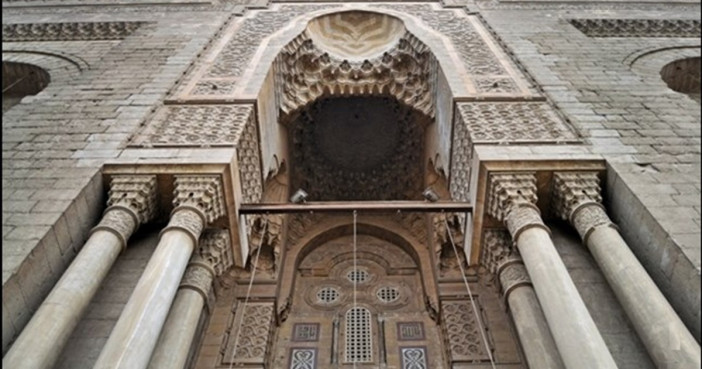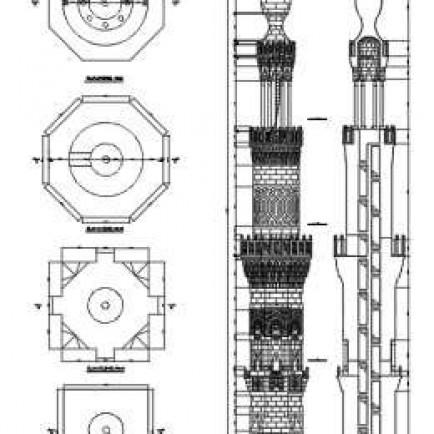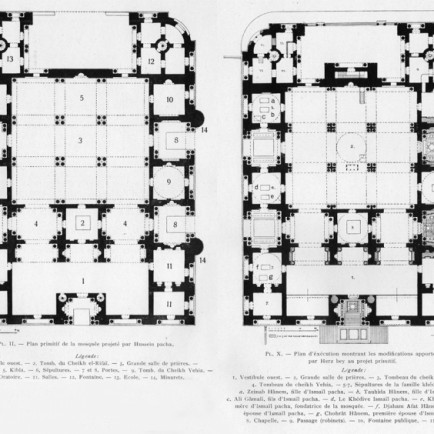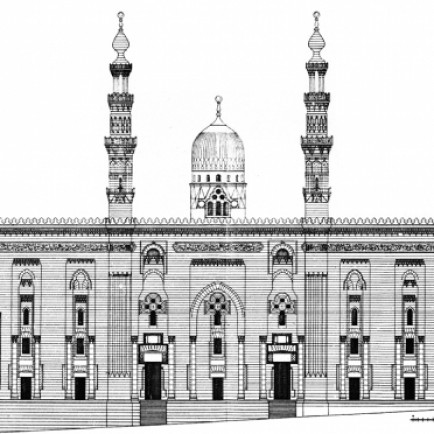Al-Rifa'i Mosque
History
the mosque of al‑Sultan Ḥassan. It is a monumental structure that dwarfs the surrounding landscape. The mosque gets its name from imam Ahmad al‑Rifa’i (512–578 AH/1118–1181/2 AD), who founded the Rifa’i tariqa (Sufi path). Although he was never buried here, the mosque is the site of joyous annual Sufi celebrations commemorating his birth.
Urban and Architectural
The original structure was a Fatimid mosque, which was then transformed into a shrine for Ali abu Sheibak. Finally, Ottoman queen Kosheir Hanim commissioned the current design of the mosque and put in charge of the construction the architect Hussein Pasha Fahmi. Part of the plan was to have a mausoleum for the royal family as part of the extension, which was made by imported building materials from Europe, such as Italian marble. In addition to traditional raw materials, cement has also been employed in the construction of the mosque—a first for any Islamic monument in Egypt—signaling the transition into modern times.
Al‑Rifa’i Mosque’s architectural design is as interesting as its construction history. Visitors stand in awe of the detailed decoration of the outer walls and massive columns of the outer gate. The minarets are distinguished by their beauty and elegance.
Description
Among the remarkable pieces of furniture are an alabaster dikka (platform), supported by eight slender columns, an ornate wooden and alabaster minbar and several intricately designed chandeliers.
References
https://fr.wikipedia.org/wiki/Mosqu%C3%A9e_Al-Rifa%27i
https://egymonuments.gov.eg/monuments/al-rifa-i-mosque/
Details
Location
El-Refaey, El-Darb El-Ahmar, Cairo Governorate, Égypte
Worshippers
3500
Area
7000
Drawings
Map
History
the mosque of al‑Sultan Ḥassan. It is a monumental structure that dwarfs the surrounding landscape. The mosque gets its name from imam Ahmad al‑Rifa’i (512–578 AH/1118–1181/2 AD), who founded the Rifa’i tariqa (Sufi path). Although he was never buried here, the mosque is the site of joyous annual Sufi celebrations commemorating his birth.
Urban and Architectural
The original structure was a Fatimid mosque, which was then transformed into a shrine for Ali abu Sheibak. Finally, Ottoman queen Kosheir Hanim commissioned the current design of the mosque and put in charge of the construction the architect Hussein Pasha Fahmi. Part of the plan was to have a mausoleum for the royal family as part of the extension, which was made by imported building materials from Europe, such as Italian marble. In addition to traditional raw materials, cement has also been employed in the construction of the mosque—a first for any Islamic monument in Egypt—signaling the transition into modern times.
Al‑Rifa’i Mosque’s architectural design is as interesting as its construction history. Visitors stand in awe of the detailed decoration of the outer walls and massive columns of the outer gate. The minarets are distinguished by their beauty and elegance.
Description
Among the remarkable pieces of furniture are an alabaster dikka (platform), supported by eight slender columns, an ornate wooden and alabaster minbar and several intricately designed chandeliers.


